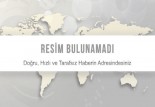How to Provide Protection For Your Data

In a time when personal data is a valuable commodity, protecting that data is a top concern for individuals and businesses of all sizes. One breach could expose clients to identity theft, financial harm or even lawsuits. There are a variety of ways to protect personal information and prevent hacking and theft.
TAKE STOCK
Review the amount of sensitive information your company stores in computer files and on servers and devise a strategy to keep it only until it is absolutely necessary. This could involve taking inventory of devices that record data, such as PIN pads and cameras for surveillance, as well as identifying connections between computers and external sources, such as the internet and computers that are used to support your network by service providers, or a digital copier.
SCALE DOWN
Limit access to sensitive data only to those who need it. This decreases the chance of an insider threat or loss from hackers. Pro tip: Follow the principle of least privilege by giving new accounts the smallest level of access to sensitive information, but increasing this privilege only as they grow in seniority or are required to do so by their job.
It’s locked IT
Make sure that passwords are strong, complex, and unique. Passwords that are easy to guess can be compromised within a matter of seconds and used to gain unauthorised access. Don’t send passwords in plain text through email, and make sure to encrypt any data that contains sensitive or private information.
Benzer Haberler
























